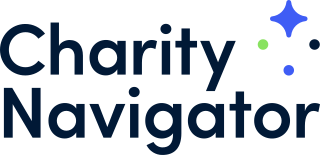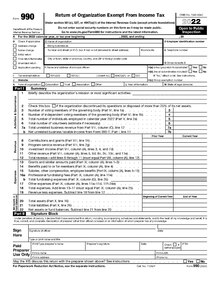
A nonprofit organization (NPO), also known as a nonbusiness entity or nonprofit institution, and often referred to simply as a nonprofit, is a legal entity organized and operated for a collective, public or social benefit, as opposed to an entity that operates as a business aiming to generate a profit for its owners. A nonprofit is subject to the non-distribution constraint: any revenues that exceed expenses must be committed to the organization's purpose, not taken by private parties. An array of organizations are nonprofit, including some political organizations, schools, business associations, churches, social clubs, and consumer cooperatives. Nonprofit entities may seek approval from governments to be tax-exempt, and some may also qualify to receive tax-deductible contributions, but an entity may incorporate as a nonprofit entity without having tax-exempt status.
Public Interest Watch (PIW) was established in September 2002 by Mike Hardiman. The PIW website states that the group was created "in response to the growing misuse of charitable funds by nonprofit organizations and the lack of effort by government agencies to deal with the problem." In March 2006 the Wall Street Journal reported that PIW received approximately 95% of its funding from ExxonMobil during the fiscal year ended July 31, 2004.
Car donation is the practice of giving away unwanted used automobiles or other vehicles to charitable organizations. In the United States, these donations can provide a tax benefit to the donor.

A charitable organization or charity is an organization whose primary objectives are philanthropy and social well-being.
United States non-profit laws relate to taxation, the special problems of an organization which does not have profit as its primary motivation, and prevention of charitable fraud. Some non-profit organizations can broadly be described as "charities" — like the American Red Cross. Some are strictly for the private benefit of the members — like country clubs, or condominium associations. Others fall somewhere in between — like labor unions, chambers of commerce, or cooperative electric companies. Each presents unique legal issues.
A 501(c) organization is a nonprofit organization in the federal law of the United States according to Internal Revenue Code and is one of over 29 types of nonprofit organizations exempt from some federal income taxes. Sections 503 through 505 set out the requirements for obtaining such exemptions. Many states refer to Section 501(c) for definitions of organizations exempt from state taxation as well. 501(c) organizations can receive unlimited contributions from individuals, corporations, and unions.

Charity Navigator is a charity assessment organization that evaluates hundreds of thousands of charitable organizations based in the United States, operating as a free 501(c)(3) organization. It provides insights into a nonprofit's financial stability, adherence to best practices for both accountability and transparency, and results reporting. It is the largest and most-utilized evaluator of charities in the United States. It does not accept any advertising or donations from the organizations it evaluates.
Laws regulating nonprofit organizations, nonprofit corporations, non-governmental organizations, and voluntary associations vary in different jurisdictions. They all play a critical role in addressing social, economic, and environmental issues. These organizations operate under specific legal frameworks that are regulated by the respective jurisdictions in which they operate.
A 501(c)(3) organization is a United States corporation, trust, unincorporated association or other type of organization exempt from federal income tax under section 501(c)(3) of Title 26 of the United States Code. It is one of the 29 types of 501(c) nonprofit organizations in the US.
The United States Internal Revenue Service (IRS) uses forms for taxpayers and tax-exempt organizations to report financial information, such as to report income, calculate taxes to be paid to the federal government, and disclose other information as required by the Internal Revenue Code (IRC). There are over 800 various forms and schedules. Other tax forms in the United States are filed with state and local governments.
A foundation in the United States is a type of charitable organization. However, the Internal Revenue Code distinguishes between private foundations and public charities. Private foundations have more restrictions and fewer tax benefits than public charities like community foundations.
A religious corporation is a type of religious non-profit organization, which has been incorporated under the law. Often these types of corporations are recognized under the law on a subnational level, for instance by a state or province government. The government agency responsible for regulating such corporations is usually the official holder of records, for instance, the Secretary of State. In the United States, religious corporations are formed like all other nonprofit corporations by filing articles of incorporation with the state. Religious corporation articles need to have the standard tax-exempt language the IRS requires. Religious corporations are permitted to designate a person to act in the capacity of corporation sole. This is a person who acts as the official holder of the title on the property, etc.
Candid is an information service specializing in reporting on U.S. nonprofit companies. In 2016, its database provided information on 2.5 million organizations. It is the product of the February 2019 merger of GuideStar with Foundation Center.
A nonpartisan organization, in American politics, is a non-profit organization organized United States Internal Revenue Code that qualifies certain non-profit organizations for tax-exempt status because they refrain from engaging in certain political activities prohibited for them. The designation "nonpartisan" usually reflects a claim made by organizations about themselves, or by commentators, and not an official category per American law. Rather, certain types of nonprofit organizations are under varying requirements to refrain from election-related political activities, or may be taxed to the extent they engage in electoral politics, so the word affirms a legal requirement. In this context, "nonpartisan" means that the organization, by US tax law, is prohibited from supporting or opposing political candidates, parties, and in some cases other votes like propositions, directly or indirectly, but does not mean that the organization cannot take positions on political issues.

Water For People was founded in 1991 by the American Water Works Association (AWWA) as a response to the increasing water scarcity in developing countries. It is a nonprofit international development organization that helps people in rural parts of developing countries achieve greater access to drinkable and potable water and sanitation facilities. It works to accomplish the United Nations' 6th Sustainable Development Goal: availability of clean water and sanitation and comprehensive monitoring of freshwater facilities for the progression of human health. They seek to address the issue of nonexistent and suboptimal water and sanitation facilities across less-developed countries. With developing locally sustainable drinking water resources and sanitation facilities, Water For People also works to bring health and hygiene education programs to local districts. The non-governmental organization also works to empower and involve local governments, corporations, schools, homes, and individuals in the construction, financing, and maintenance of the water infrastructure. Water For People has established a year-round presence in 30 districts of nine developing countries, including Guatemala, Honduras, Nicaragua, Bolivia, Peru, India, Rwanda, Uganda and Malawi. In totality, Water For People reaches 4 million people.

The National Center for Charitable Statistics (NCCS) is a clearing house for information about the nonprofit sector of the U.S. economy. The National Center for Charitable Statistics builds national, state, and regional databases and develops standards for reporting on the activities of all tax-exempt organizations.
Aplos Software is a privately held company that specializes in software as a service for nonprofit organizations. Their primary focus is simple software to manage the essential nonprofit tasks of fund accounting, nonprofit tax preparation and donor management for small, mid-sized, and large non-profit organizations.
Form 1023 is a United States IRS tax form, also known as the Application for Recognition of Exemption Under 501(c)(3) of the Internal Revenue Code. It is filed by nonprofits to get exemption status. On January 31, 2020, the IRS abandoned the paper format of the form 1023. Those who used the paper version were given 90 days grace period and that ended on April 30, 2020. Going forward, every application has to be filed online through Pay.gov portal.
A 501(h) election or Conable election is a procedure in United States tax law that allows a 501(c)(3) non-profit organization to participate in lobbying limited only by the financial expenditure on that lobbying, regardless of its overall extent. This allows organizations taking the 501(h) election to potentially perform a large amount of lobbying if it is done using volunteer labor or through inexpensive means. The 501(h) election is available to most types of 501(c)(3) organizations that are not churches or private foundations. It was introduced by Representative Barber Conable as part of the Tax Reform Act of 1976 and codified as 26 U.S.C. § 501(h), and the corresponding Internal Revenue Service (IRS) regulations were finalized in 1990.
Americans for Prosperity Foundation v. Bonta, 141 S.Ct. 2373 (2021), is a United States Supreme Court case dealing with the disclosure of donors to non-profit organizations. The case challenged California's requirement that non-profit organizations disclose the identity of their donors to the state's Attorney General as a precondition of soliciting donations in the state. The case was consolidated with Thomas More Law Center v. Bonta. In July 2021, the Supreme Court ruled in a 6–3 decision that California's requirement burdened the donors' First Amendment rights, was not narrowly tailored, and was constitutionally invalid.





